What Do Bed Bugs Look Like?
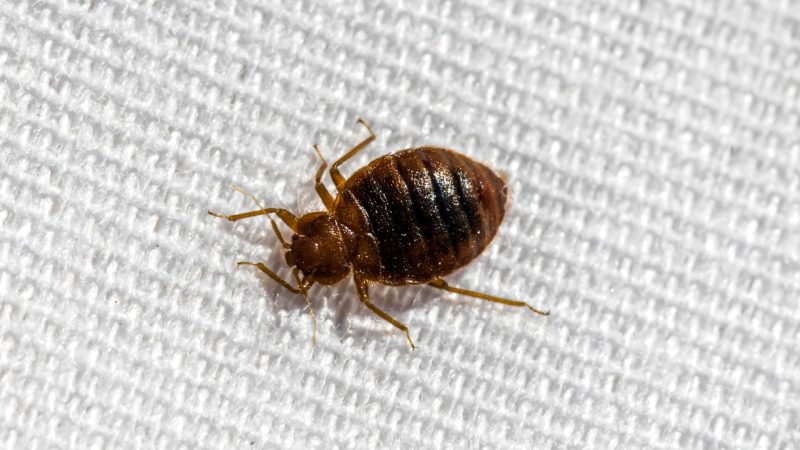
Common Bugs Mistaken as Bed Bugs | Identification
1. Bat Bugs
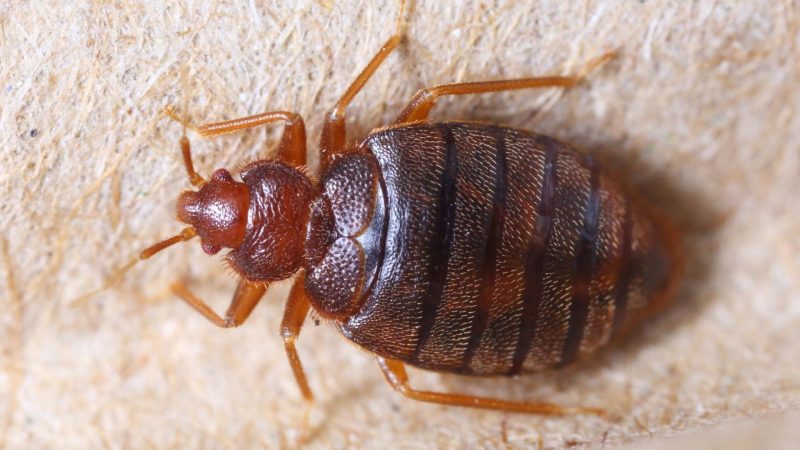
Related: Bat Bugs Information, Habitat, and Control
2. Booklice
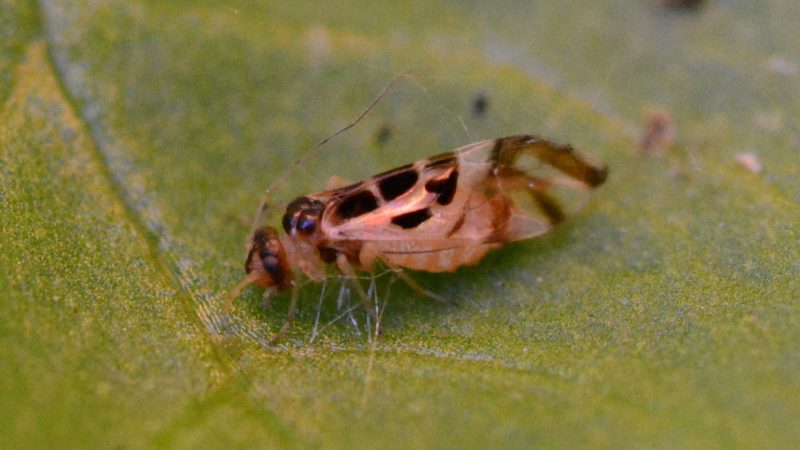
Although they resemble more of a termite, their long antennae and soft bodies may be similar to that of bed bugs.
- Scientific Name: Psocoptera
- Size: They are less than 1/16 inch in length.
- Color: The adults of this species have a white, brown, and gray color.
- Wings and Antenna: They have no wings, but they have long and straight antennae.
- Bite: These creatures do not bite.
- Habitat: They are often seen on leaves or bark of trees and shrubs but can also be found indoor areas with high temperatures, such as in old books and papers.
- Health Risk: Generally, they do not pass on diseases. However, when their dead bodies are combined with dust and go into the air, people experiencing bouts of asthma may be affected.
- Infestation: Since they feed on molds, they may infest food particles, papers, and similar materials that cultivate the growth of molds.
3. Carpet Beetles
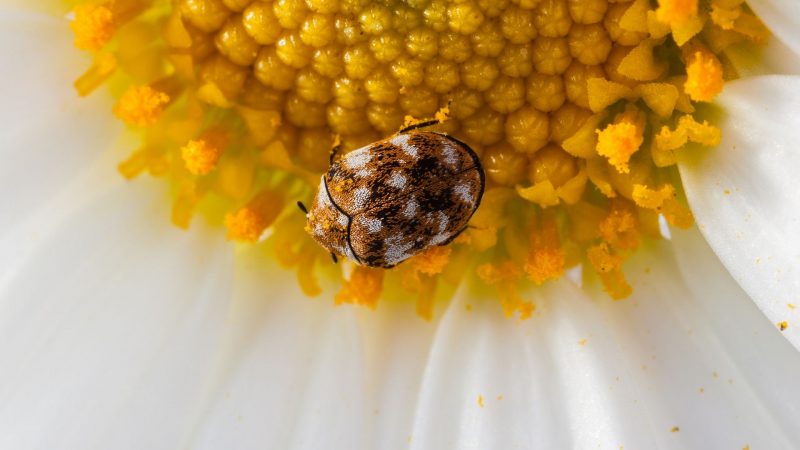
Their oval-shaped bodies and short legs are comparable to the body structures of bed bugs. Also, they thrive in synthetic carpet materials and bed paraphernalia that are made from animal sources such as wool, furs, and feathers.
- Scientific Name: Anthrenus scrophulariae
- Size: They measure 1/16 inch to 1/8 inch in length.
- Color: Their oval-shaped bodies are black in color but adorned with patterns of orange, brown, yellow, red, and white.
- Wings and Antenna: These bugs develop once they become adults and their antennae have 11 segments.
- Bite: They do not have the tendency to bite humans.
- Habitat: The adult carpet beetles are typically found outdoors, while their larvae are found in carpets, clothing, drawers, moldings, furniture, and baseboards.
- Health Risk: Prolonged contact and exposure to larvae hairs may cause itchiness and rashes, while hair fibers suspended in the air may lead to eye irritation and respiratory problems.
- Infestation: Their larvae feed on materials containing keratin, so they may infest items made from feathers, silk, wool, leather, skins, fur, and felt.
Related: Carpet Beetles in Bed: Do Carpet Beetles Get in Your Bed?
4. Cockroach Nymphs
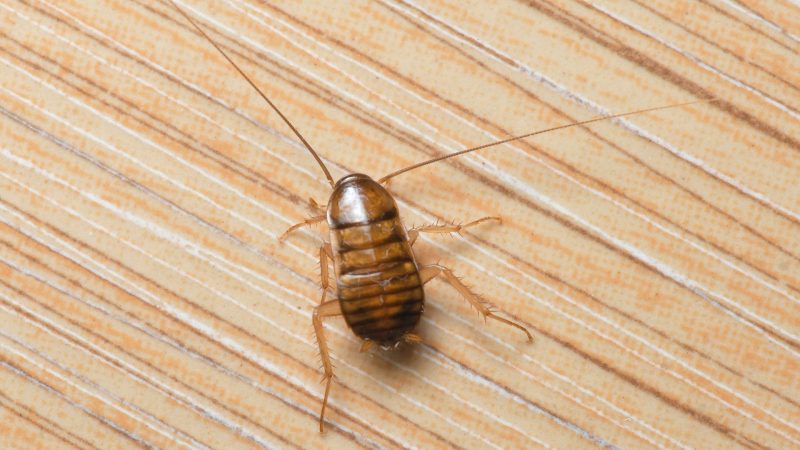
Their reddish-brown hue is analogous to the color of bed bugs. However, their bodies are more cylindrical in shape, and they do not suck on blood.
- Scientific Name: Blattodea
- Size: They are less than 0.12 inches in length.
- Color: Their colors range from reddish to brown or tan to black.
- Wings and Antenna: When they complete their final molt, their wings appear. They also have antennae.
- Bite: They do not usually bite humans as their main concern at this stage is to search for food.
- Habitat: Cockroaches thrive in warm and moist environments. However, they can also stay in areas close to food like restaurants, grocery stores, bakeries, hotels, warehouses, and kitchens.
- Health Risk: Frequent contact with these pests can lead to allergic reactions. Also, cockroaches are known to transmit infections in the digestive tract such as cholera, diarrhea, dysentery, and typhoid fever.
- Infestation: They may be regarded as nuisances in locations where food is usually stored and kept, such as in warehouses, grocery stores, markets, and restaurants.
Related: How to Get Rid of Baby Cockroaches | Practical Tips and Prevention Guide
5. Fleas
They are often mistaken as bed bugs due to their similar color (reddish-brown) and body shape (oval). However, fleas are flatter, skinnier, and smaller in size than bed bugs.
- Scientific Name: Siphonaptera
- Size: They are estimated to be 1/8 inch long.
- Color: The bodies of these tiny creatures are reddish to brown.
- Wings and Antenna: They do not have wings, so they utilize their legs to move. However, they have antennae that are usually found just behind their eye structures.
- Bite: These creatures can bite humans. These bites may be painful and may cause inflammation, hives, and severe itching.
- Habitat: They love to stay on the bodies of their hosts, such as cats and dogs. On the other hand, flea larvae may be found on carpets, mattresses, and pet mats.
- Health Risk: These parasites can transmit diseases such as plague and typhus. If fleas cling too much to your pets, anemia may result.
- Infestation: They become a problem once they attack and stick to the bodies of cats, dogs, and other pets as they frequently suck blood. This is their method of entering inside houses and establishments.
Related: How Do You Know if You Have Fleas in Your Bed? | Information and Guide
6. Lice
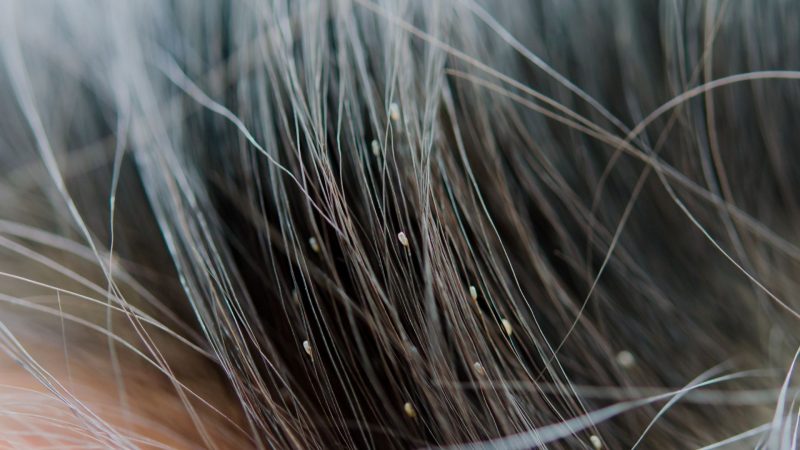
They are usually compared to bed bugs due to their ability to suck blood and crawl on surfaces. However, lice are commonly seen in the heads and back of the ears of humans, and their bodies are not so oval in shape.
- Scientific Name: Phthiraptera
- Size: They typically measure 0.08 to 0.12 inches in length, which is about the size of a sesame seed.
- Color: These insects are tan to gray in color but look darker when found in dark hair.
- Wings and Antenna: They do not have wings, so they only crawl. They have one set of antennae.
- Bite: Lice feed on blood, and their bites usually cause severe itching.
- Habitat: They live on a host to obtain blood, such as on the scalps of humans.
- Health Risk: The lice do not pose a serious health problem but may trigger intense itching and lack of sleep. However, chronic lice infestation may cause iron deficiency anemia as it can lead to severe blood loss.
- Infestation: They stay and suck on blood from their hosts, which is most of the time humans.
7. Mites
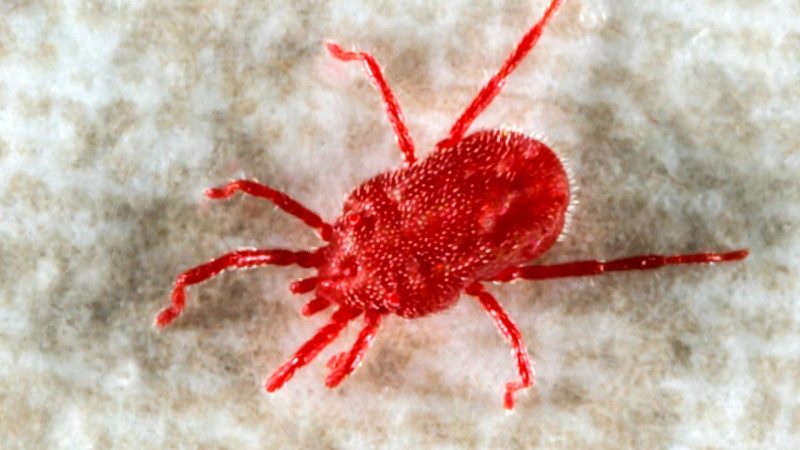
Just like bed bugs, these creatures also have a small size and no wings at the back of their bodies. However, they have a freer lifestyle as they feed on decaying materials or live inside the host animal’s intestine, lungs, bladder, and ear canal.
- Scientific Name: Acariformes
- Size: They can be as small as 0.004 inches and as big as 0.25 inches.
- Color: The color of mites may vary from brown, reddish-brown, tan, bright red, blue, and green.
- Wings and Antenna: They do not have wings and antennae.
- Bite: Their bites may cause skin irritation and itchiness.
- Habitat: They may live in freshwaters, hot springs, brackish waters, plants, and soil. These arthropods can also be a parasite of animals and humans.
- Health Risk: This parasite can cause skin irritation and allergic reactions. They can also serve as vectors of rickettsial diseases in humans.
- Infestation: The habit of burrowing on the skin of their host is in order to lay eggs. This leads to scabies, a condition that is acquired from the infestation of human itch mites on the skin.
8. Spider Beetles
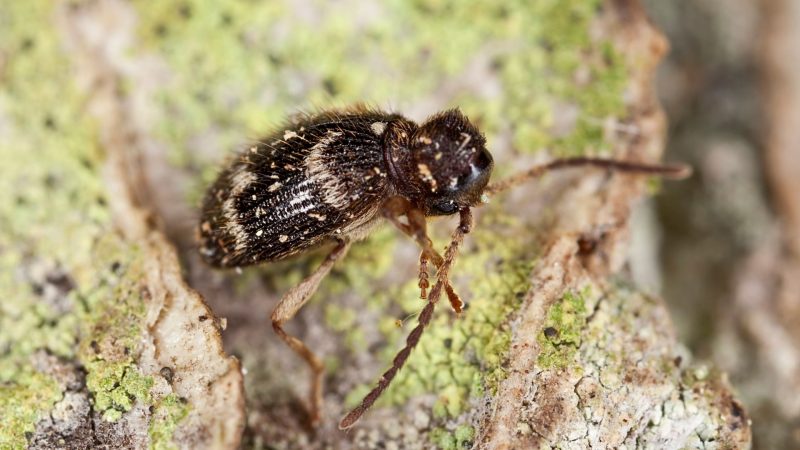
At first glance, spider beetles may be considered as the twin siblings of bed bugs due to their analogous oval-shaped bodies and small size. But these insects live predominantly in areas where there are wood structures, food supplies, and poor sanitation.
- Scientific Name: Ptininae
- Size: They have a length of 0.06 to 0.14 inches.
- Color: Their abdomen is dark red to brown or black, while their head, legs, thorax, and antennae are cream to light yellow.
- Wings and Antenna: They do not have wings, but they have one pair of antennae.
- Bite: These creatures do not usually bite humans.
- Habitat: They prefer dark and moist places such as attics and cracks in wooden floors.
- Health Risk: These beetles may contaminate the food they infest, and when ingested by humans, various health problems may arise.
- Infestation: They may infest different food products such as beans, cereals, wheat, meats, and spices.
9. Swallow Bugs
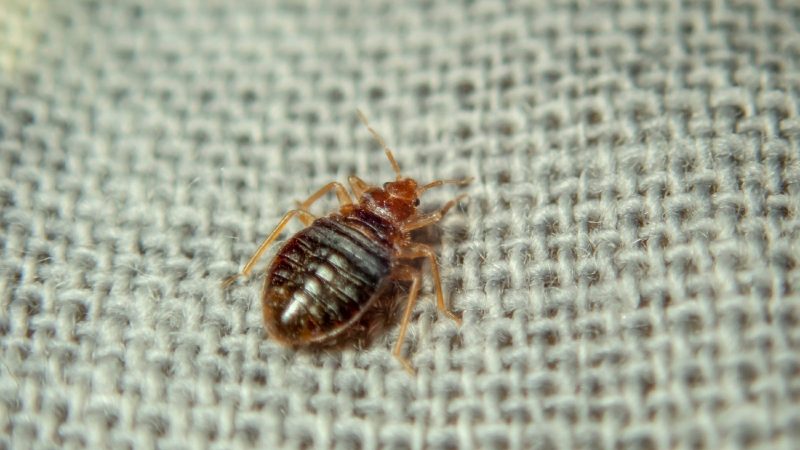
They have the same size and color as bed bugs, and they are frequently found nesting with the latter. However, swallow bugs are filled with hairs on their bodies, and they prefer to feed on the blood of swallow birds.
- Scientific Name: Oeciacus vicarius
- Size: They are around 0.18 inches long.
- Color: Their color is grayish-brown.
- Wings and Antenna: They have no wings but possess an antenna with four segments.
- Bite: These insects will bite humans when their primary hosts, the swallow birds, are not present.
- Habitat: They reside in the nests of their hosts but may enter inside homes once these nests are close to the openings of houses.
- Health Risk: These creatures are not known to carry diseases, but their bites may cause adverse reactions in humans.
- Infestation: They may infest humans and their houses when swallow birds are unavailable.
10. Ticks
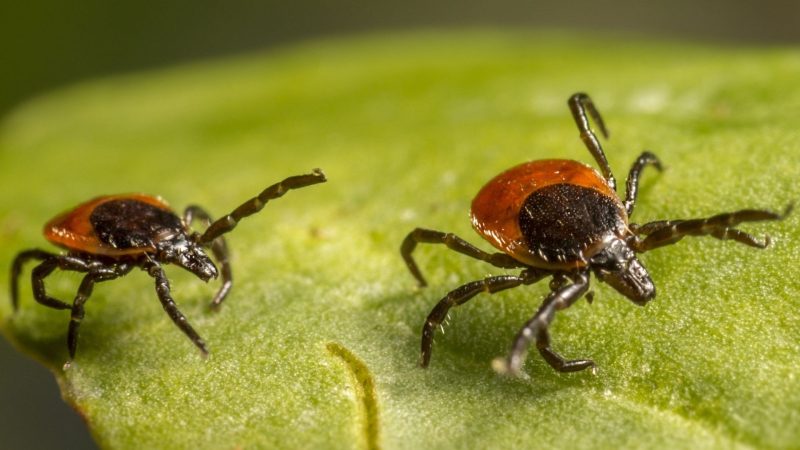
They are similar to bed bugs in the sense that they both feed on blood and possess brown, flat bodies. However, their bodies become engorged when filled with blood, and they are potential vectors of certain illnesses.
- Scientific Name: Ixodida
- Size: Wood ticks typically have a size of 0.12 inches in length.
- Color: They are red to brown or black in color. Once they suck on blood and become engorged, their colors may turn gray or blue.
- Wings and Antenna: These tiny creatures have no wings and antennae.
- Bite: They have the capability to bite humans and feed on their blood.
- Habitat: These pests mostly reside in areas where there are tall grasses and trees and where their hosts, such as rabbits, squirrels, deer, and rodents, live.
- Health Risk: They are excellent vectors of parasites, viruses, and bacteria that are causative agents of diseases such as Lyme Disease, Tularemia, Ehrlichiosis, Rocky Mountain spotted fever, Anaplasmosis, and Southern Tick-Associated Rash Illness.
- Infestation: When your house is near brushy or wooded locations, tick infestation may likely occur. These bugs may also be brought inside a home through the affected pets.
Related: How To Get Rid of Ticks in Yard | A Complete Guide
When to Call a Pest Control Professional?
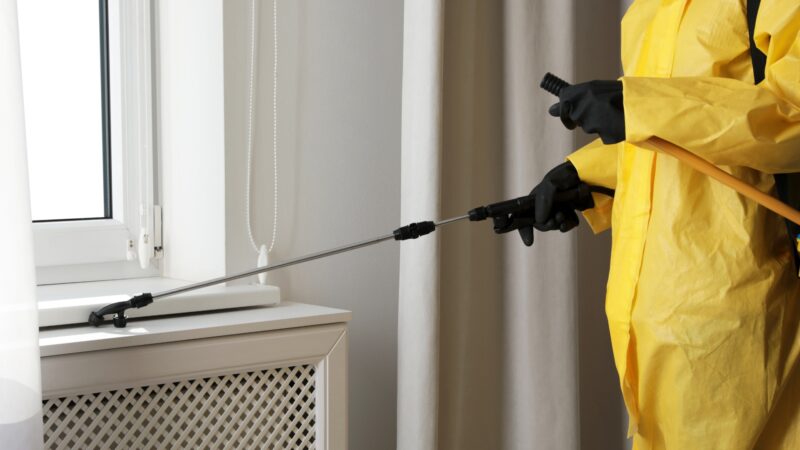
When the pest infestation is getting worse each day, it is best to call a pest control professional. They have all the necessary equipment and devices to manage pest invasion safely, timely, and effectively. Also, it is highly advisable to employ their services when you have done your part in doing DIY pest treatments, but no relief has been experienced.
Furthermore, constantly obtaining the help of pest control agencies will prevent a worsening pest condition or a possible infestation in the future.
The next time you see an insect looking like a bed bug, take a second look to make sure that it is really one. Several creatures appear like bed bugs, and it would be better to know all of them so that we could apply the correct intervention in preventing and controlling their infestation.
Related: Natural Ways to Get Rid of Bed Bugs | Safe and Effective Methods
List of Sources
Jacob, S. (2014). Booklice. The Pennsylvania State University.
Hahn, J., Kells, S. (2021). Bed bugs. University of Minnesota.
Huill, S., Mitola, M. (2017). Common Name: Common Carpet Beetle. University of Florida.
Potter, M. (2018). Flea Control and Prevention. University of Kentucky.
Parasites – Lice. (2019). Centers for Disease Control and Prevention.
- How to Get Rid of Copperheads | Practical Guide - August 27, 2023
- How to Get Rid of Corn Snakes | What Makes Them Aggressive? - August 27, 2023
- How to Get Rid of Alligators | Safety Measures and Removal Methods - July 16, 2023
